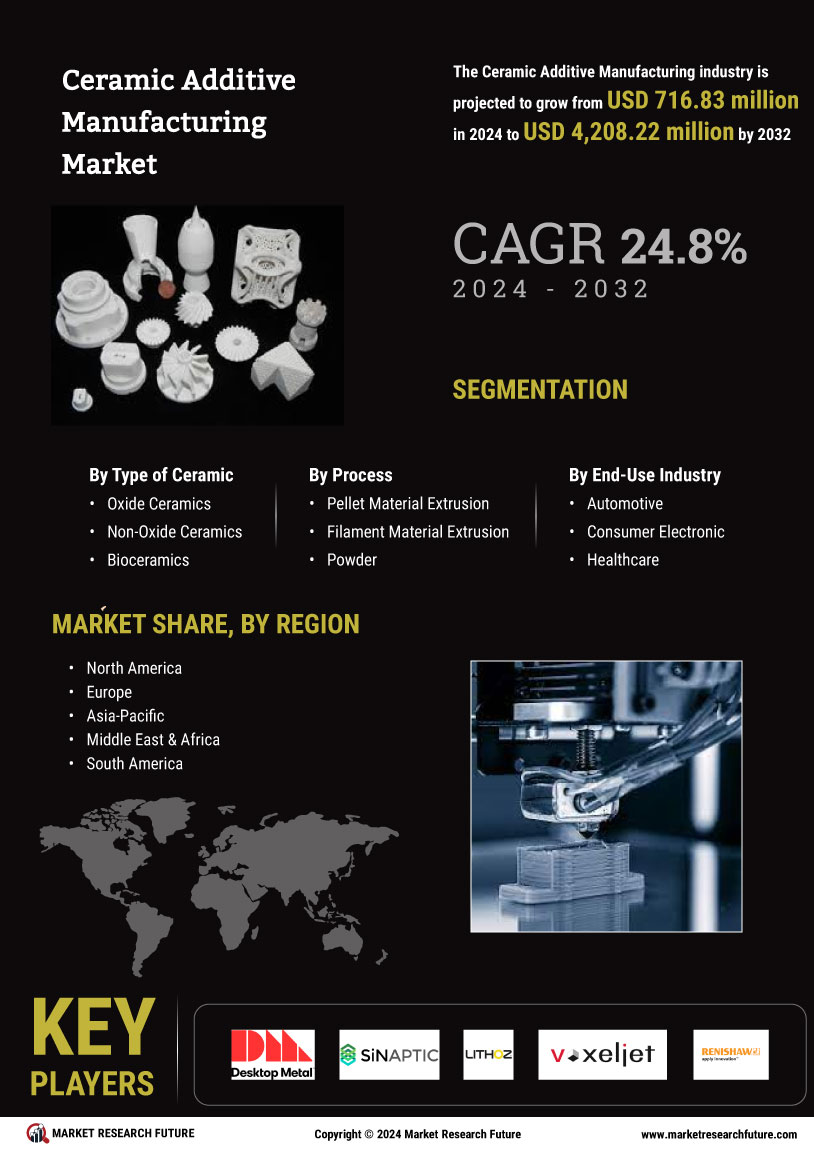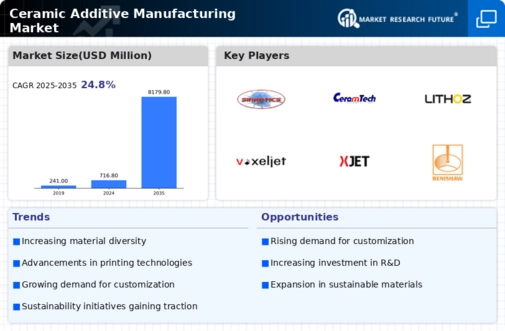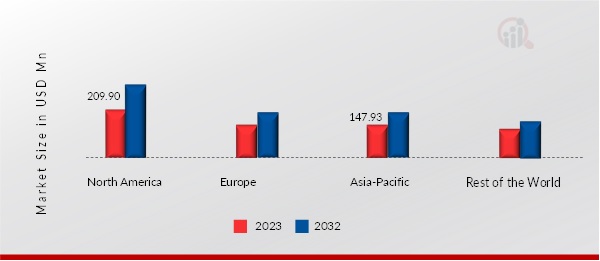RISE IN NUMBER OF CONSTRUCTION ACTIVITIES ACROSS THE GLOBE
Ceramic additive manufacturing is used for construction activities due to design flexibility it offers. Unlike traditional construction techniques ceramic additive manufacturing offers easy building of complex geometries, intricate details, and even hollow structures with internal features. Traditional methods rely on molds for shaping the ceramic material. Complex structures are impossible with traditional methods as the entire shape needs to be formed upfront. For producing dense materials structures with a high level in mechanical properties, additive manufacturing methods have to be used. AM builds the object layer-by-layer using only the material needed for the design. This helps in minimizing waste.
Traditional methods focus on subtractive methods and processes which generate waste. Also, the properties of ceramics like brittleness is handled in additive manufacturing without any risk. Ceramic additive manufacturing helps in making components with unique functionalities or lightweight structures. There are various processes used in construction for additive manufacturing like extrusion based additive manufacturing.
The additive manufacturing techniques used in the construction sector differ on the one hand with regard to the material used, and on the other hand with regard to the technology applied in each case The Extrusion based additive manufacturing for ceramics offers various advantages over other processes. 3D printing technology can largely automate the construction process, reducing the need for more labors and labor costs. With the ceramic additive manufacturing modular construction is trending. Lightweight and high-performance structures can be built easily with the help of ceramics AM.
The high temperature resistance enables ceramics AM along with their resistance to corrosion. Furthermore, through AM the properties of ceramics like porosity ,thermal and electrical conductivity can be adjusted according to ones need by incorporating several materials. This produces several flexible options in the construction industry and therefore ceramics AM is used in construction.
Another method used is powder based AM, particularly called binder jetting which fosters market growth. Binder jetting is an additive manufacturing process in which an industrial printhead selectively deposits a liquid binding agent onto a thin layer of powder particles of ceramics. This agent can be chosen according to one’s construction need. The competition in architectural designs is increasing due to intricate, complex ,geometrical designs covered with the help of ceramic AM. On site automation and faster construction is boosting the ceramic AM construction market.
HIGH-PERFORMANCE APPLICATIONS IN AEROSPACE & DEFENSE
Additive technologies are revolutionizing the aerospace sector, offering multiple benefits. These include the creation of lighter, yet stronger components with intricate designs, unlocking unprecedented design flexibility. In airplanes, every kilogram saved in weight translates to significant fuel savings. This is because less energy is required to propel a lighter aircraft through the air. Additionally, the ability to produce lightweight components through additive manufacturing in aerospace directly contributes to fuel efficiency in aircraft. This leads to lesser carbon emissions as well.
Ceramic components for the aerospace industry are often characterized by very complex shapes, driving the development of new forming technologies, such as 3D printing. Also, in aerospace and defense applications materials able to withstand high temperatures is required. Ceramics used in aircraft are lighter compared to other metals and help in faster speed ,less corrosion, fuel consumption and high weight load capacity. Structural ceramics have applications that include thermal protection systems in rocket exhaust cones, missile nose cones, and engine components. Ceramic matrix composites have been applied in critical engine components such as turbine vanes and combustion liners.
Aircraft engine components with internal cooling channels, made possible only by additive manufacturing, can lead to more efficient and cooler-running engines. Ceramic materials are used in gas turbine engine needs, because of their high temperature durability, lower specific weight, and high resistance to hot corrosion. In military applications ,urgent requirements in equipment can be managed by reducing delay in logistics and supply chain due to the speed offered through ceramic AM. From producing lighter and stronger components to creating innovative tools and spare parts, AM is revolutionizing military logistics and maintenance processes.
Some advanced ceramics are aluminum oxide (Al2O3), silicon nitride (Si3N4), silicon carbide (SiC), and zirconia (ZrO2). Through the utilization of 3D printing technology, even ultra-high temperature ceramics (UHTCs) can be fabricated. This serves as an advantage in the aerospace and defense industry. Components with complex geometries and shapes that in many cases are impossible to create using any other technology are possible through AM. Low aerospace volumes and an efficient supply chain make additive manufacturing an attractive, lower-cost alternative. As demand increases, material science advances and cost efficiency is offered ,there has been seen a wider adoption of this technology.
GROWTH IN 3D PRINTED PRODUCTS
The demand for customized and complex geometries fuels the adoption of 3D printing. The technology of additive manufacturing is excelling in producing intricate designs that are not possible easily by traditional manufacturing methods. Emerging applications of 3D printed technologies in automotive, healthcare, construction, aerospace, and defence is fuelling the ceramic additive manufacturing market. Many sectors like automotive and aerospace have already started using additive manufacturing in their operations because of the reduced lead time and low cost. In healthcare, Ceramic 3D printing technology is used for making high-precision personalized manufacturing of orthopedic implants.
In construction sector, 3D modelling enables teams to accurately understand their designs, eliminate further risks and costs. By depositing material only where required for the final design intent, 3D printing reduces waste generation significantly.3D printing eliminates the time required for molds, casts and few parts required for production.
AM technology has witnessed significant development, with new technologies and production processes being developed. More energy efficient processes and developing recyclable materials are some trends in the industry increasing the demand for 3D printed products. The design flexibility offered by AM also creates several opportunities in this market. Low-volume production and mass customization along with design freedom and innovation is possible. Rapid prototyping and design is done much faster, and the part is ready for testing, and changes in model to incorporate any needed modifications is feasible effortlessly.
Labor and operational efficiency is another advantage of 3D printed products.3D printing also discards any integration assembly issues associated with complex products. 3D printing has vast implications for the global supply chain due to the advancements offered in ceramic additive manufacturing. Therefore, there are a number of end user opportunities for the Ceramic AM market as the demand of 3D ceramic printing grows.
The ongoing advancements in ceramic additive manufacturing technologies appear to be reshaping the landscape of various industries, suggesting a transformative potential in applications ranging from aerospace to biomedical sectors.
U.S. Department of Energy
























